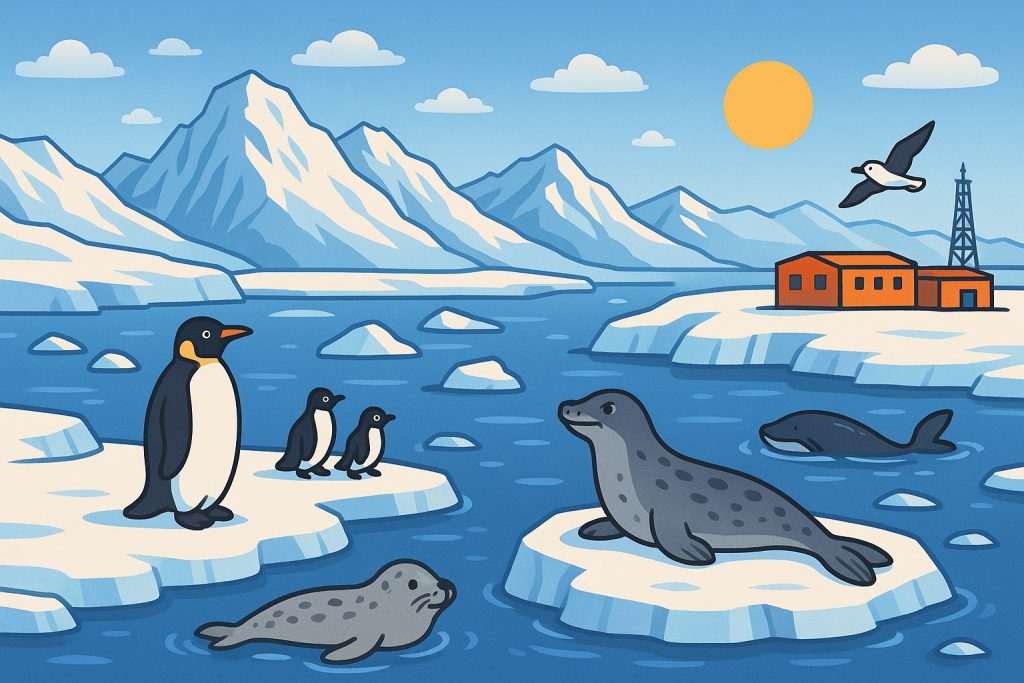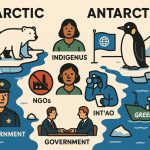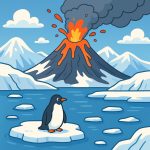Antarctica is Earth’s southernmost continent, surrounding the South Pole and covered by a vast, icy desert that holds about 70% of the planet’s freshwater. Despite being one of the most inhospitable places for human life, it is a critical component of the global climate system and a frontier for scientific discovery.
A Land of Ice and Extremes
Antarctica spans roughly 14 million square kilometers, making it the fifth-largest continent, larger than Europe or Australia. Its ice sheet is, on average, 1.9 km thick and can reach over 4 km in some areas. Temperatures in the interior can drop below –80°C (–112°F) in winter, while coastal areas may briefly rise above freezing in summer.
Who Lives There?
There is no native human population in Antarctica. However, research stations operated by over 30 countries house scientists and support staff throughout the year. These international teams study:
- Climate change
- Glaciology
- Astrobiology
- Marine ecosystems
- Ozone depletion
Wildlife includes:
- Emperor and Adélie penguins
- Seals like the Weddell and leopard seal
- Krill, a keystone species in the food chain
- Occasional whales and seabirds near the coast
A Scientific and Protected Continent
Thanks to the Antarctic Treaty System (signed in 1959), Antarctica is reserved for peaceful and scientific purposes. Key features of this agreement include:
- No military activities or weapons testing
- Free exchange of scientific information
- Prohibition of mineral resource exploitation
- Environmental protections for ecosystems
It is the only continent without permanent war or national ownership—an unprecedented model of international cooperation.
Climate and Global Importance
Antarctica’s massive ice sheets reflect sunlight, helping to cool the planet. But rising temperatures are causing ice shelf collapses and accelerated glacier melting, contributing to global sea-level rise.
Melting ice also affects ocean currents and weather patterns, linking Antarctica’s fate to climate systems across the globe.
Tourism and Impact
Tourism has increased in recent decades, with tens of thousands visiting each summer by cruise. Though strictly regulated, human activity poses risks through:
- Waste and fuel spills
- Wildlife disturbance
- Introduction of invasive species
Responsible travel and strict guidelines are vital to preserving this fragile environment.
Glossary
- South Pole — The southernmost point on Earth, located in Antarctica.
- Glaciology — The scientific study of glaciers and ice sheets.
- Krill — Tiny shrimp-like creatures that serve as a primary food source for many Antarctic animals.
- Antarctic Treaty System — An international agreement that governs the use of Antarctica for peaceful purposes only.
- Ice shelf — A floating extension of land-based ice.
- Sea-level rise — The increase in global ocean levels due to melting ice and thermal expansion.


